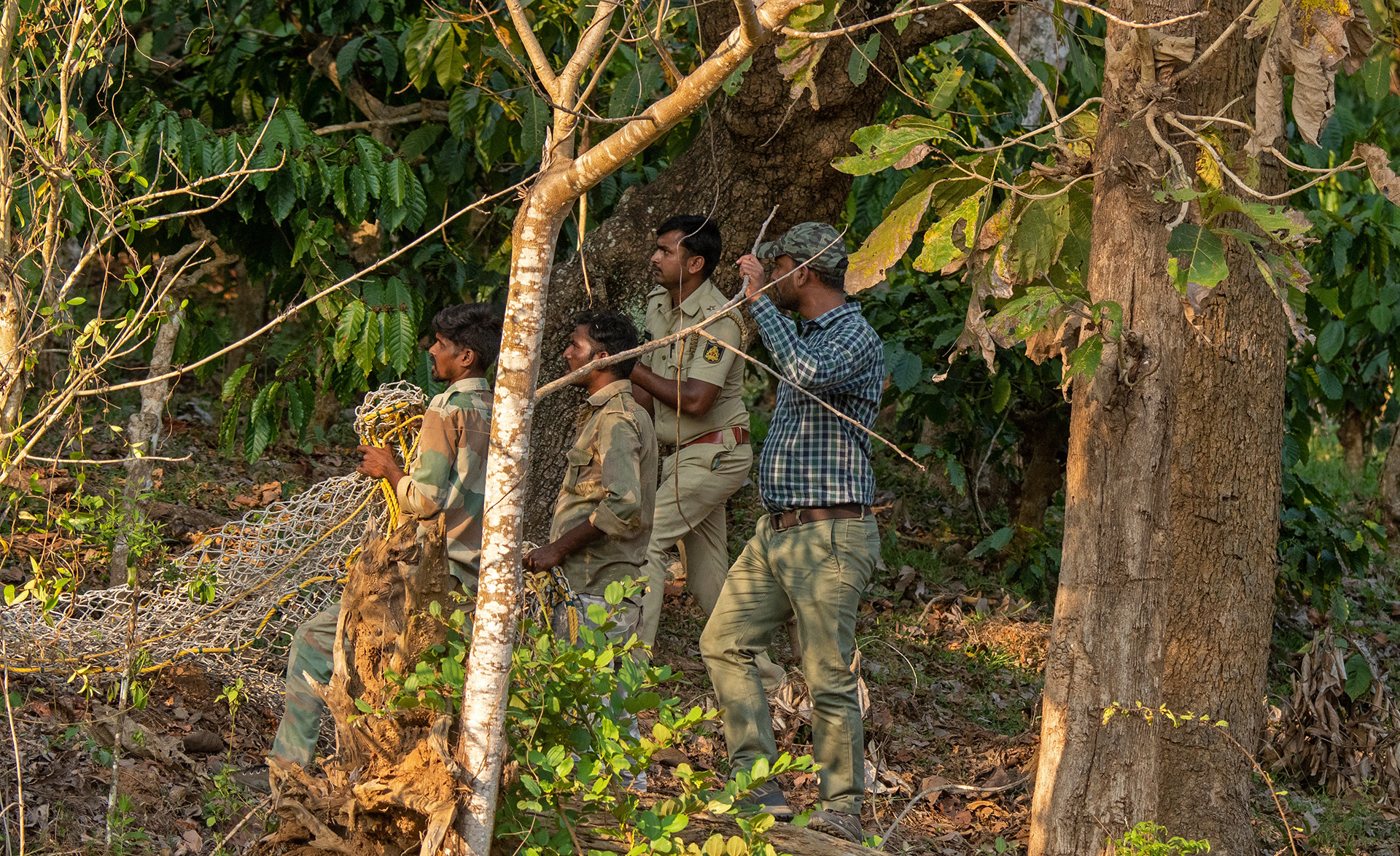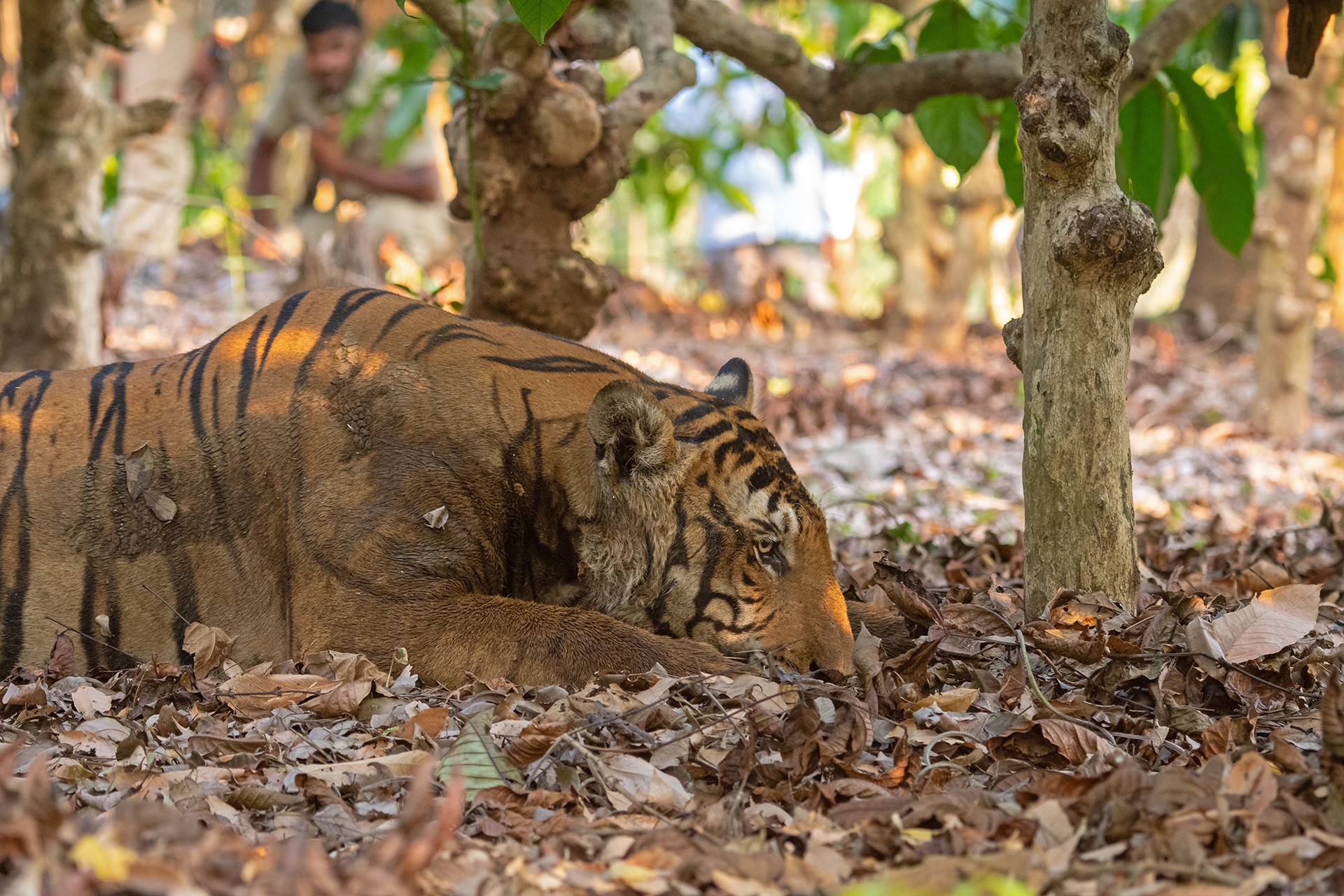On March 14, 2020, I was with the Deputy Range Forest Officer (DRFO) when he received a phone call about an injured tiger at a coffee estate in Kemkolli, Balele, in the Nagarahole Tiger Reserve buffer (Anechowkuru). By the time we had rushed to the spot, forest officials were already preparing to capture the animal.
As per the Standard Operating Procedure (SOP) drafted by the National Tiger Conservation Authority (NTCA), a tiger that has strayed into a human settlement close to a forest area needs to be addressed with high priority.
The coffee estate owner who sighted the tiger had reported the incident to the forest department. The forest department officials, along with the department veterinarian, the Chief Conservator of Forests (CCF), Deputy Commissioner (DC), Field Director of Nagarahole Tiger Reserve Mahesh Kumar, reached the spot and ensured that the public was under control and that the injured animal was not further harmed or disturbed. A little while later, I was able to click a few snapshots of the wounded tiger from different angles. Upon examining the photographs, the forest officials inferred that the tiger had not suffered external injuries. The tiger was then tranquillised and taken to Mysore for medical treatment.
The main risk with rescuing tigers and other wild animals is that they may get aggressive and attack the forest personnel and/or the general public involved in the rescue. For instance, around 4-5 years ago, an injured tiger had pounced on a news reporter during one of the rescue missions.
It is paramount that when rescuing tigers, each person involved should have fully understood the standard operating procedures and the risks involved. In this case, Field Director Mahesh Kumar took full responsibility to capture the injured tiger and transport it safely to the hospital.



